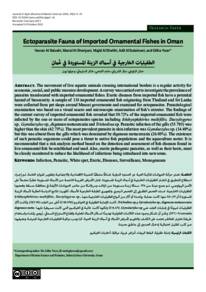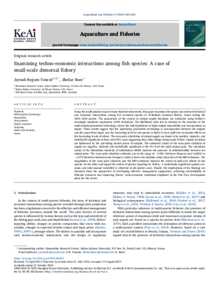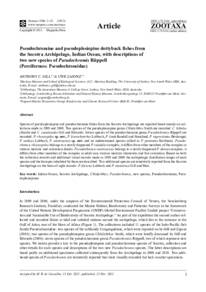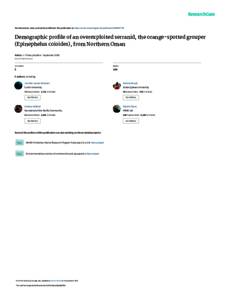وثيقة
Ectoparasite fauna of imported ornamental fishes in Oman.
المعرف
DOI: 10.53541/jams.vol29iss2pp6 -16
المصدر
Journal of Agricultural and Marine Sciences (JAMS), v. 29, no. 2, p. 6-16.
المساهمون
عناوين أخرى
الطفيليات الخارجية في أسماك الزينة المستوردة في عُمان.
الدولة
Oman
مكان النشر
Muscat
الناشر
Sultan Qaboos University.
ميلادي
2024-09-17
اللغة
الأنجليزية
الموضوع
الملخص الإنجليزي
The movement of live aquatic animals crossing international borders is a regular activity for
economic, social, and public resource development. A survey was carried out to investigate the prevalence of
parasites translocated with imported ornamental fishes. Exotic diseases from imported fish have a potential
hazard of biosecurity. A sample of 138 imported ornamental fish originating from Thailand and Sri Lanka
were collected from pet shops around Muscat governorate and examined for ectoparasites. Parasitological
examination was based on a visual macro and microscopic examination of fish’s exterior. The findings of
the current survey of imported ornamental fish revealed that 50.72% of the imported ornamental fish were
infected by the one or more of ectoparasites species including Ichthyophthirius multifiliis, Dactylogyrus
sp., Gyrodactylus sp., digenean metacercaria and Trichodina sp. Parasitic infection of the gills (55.795) was
higher than the skin (42.75%). The most prevalent parasite in skin infection was Gyrodactylus sp. (14.49%)
but this was absent from the gills which was dominated by digenean metacercaria (26.08%). The existence
of such parasitic organisms could pose a threat to native fish populations and the aquaculture sector. It is
recommended that a risk analysis method based on the detection and assessment of fish diseases found in
live ornamental fish be established and used. Also, exotic pathogenic parasites, as well as their hosts, must
be closely monitored to reduce the likelihood of infections being introduced into new areas.
ISSN
Online: 2410-1079
Print: 2410-1060
الملخص العربي
تعتبر حركة الحيوانات المائية الحية عُبر الحدود الدولية نشاطاً منتظماً للتنمية الاقتصادية والاجتماعية وتطوير الموارد العامة. تم إجراء استطلاع للتحقيق في انتشار الطفيليات الخارجية في أسماك الزينة المستوردة. تثُل الأمراض الغريبة الناجمة عن الأسماك المستوردة خطراً محتملاً على الأمن البيولوجي. تم جمع عينة من 138 سمكة زينة مستوردة من تايلاند وسريلانكا من متاجر الحيوانات الأليفة في محافظة مسقط وفحصها للطفيليات الخارجية. استند الفحص الطفيلي إلى الفحص البصري والمجهري للطبقة الخارجية للأسماك. أظهرت نتائج الدراسة الحالية لأسماك الزينة المستوردة أن 50.72% منها كانت مصابة بواحدة أو أكثر من أنواع الطفيليات الخارجية منها Ichthyophthirius multifiliis, Dactylogyrus sp., Gyrodactylus sp., digenean metacercaria وTrichodina sp. كانت الإصابة الطفيلية في الخياشيم (55.795%) أعلى من الجلد (42.75%). وكانت أكثر الطفيليات شيوعاً في إصابات الجلد هي Gyrodactylus sp. (14.49%) ولكنها كانت غائبة في الخياشيم التي كانت مسيطرة عليها digenean metacercaria (26.08%). يمكن أن تشكل وجود هذه الكائنات الطفيلية تهديداً لسكان الأسماك المحلية وقطاع الاستزراع السمكي. يُوصى بإنشاء واستخدام طريقة تحليل المخاطر تعتمد على الكشف والتقييم لأمراض الأسماك في أسماك الزينة الحية. كما يجب مراقبة الطفيليات الخارجية الممرضة ومضيفيها عن كثب لتقليل احتمالية إدخال العدوى إلى مناطق جديدة.
قالب العنصر
مقالات الدوريات




